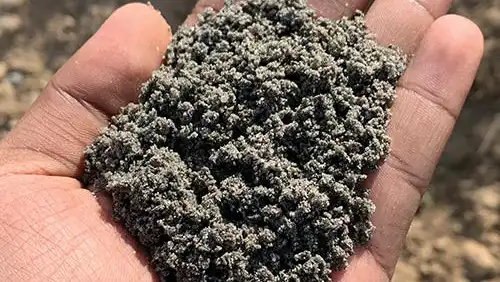
A strong and durable building requires careful selection and application of raw materials. Sand is one of the most important raw materials, as it has the potential to make or break your home or building. However, the most overlooked factor is the moisture content of the sand. The moisture content of the sand can impact the construction process, work quality, and building longevity. This write-up explains the importance of managing the moisture content of sand and its impact on construction.
What is the Moisture Content of Sand?

Moisture content is the weight of water in the sand. The maximum moisture content in the sand is up to 5%, and it can be measured by weighing the wet construction sand and drying the sand to a constant weight.
Percentage of Moisture content in sand = Weight of water/original weight
What is a Moisture Content Test in Construction?

The moisture content of a sample of sand is obtained by measuring the change in mass of the sand prior to and after drying on a saturated surface in a heating pan.
How Does Moisture Content in Sand Help in Building a Durable Home?

Workability and Mixing:
Moisture content in sand is essential to its workability during the mixing process. Sufficient moisture content promotes cohesive and manageable sand, allowing easy handling and manipulation. Insufficient moisture content can measure a dry, crumbly mixture, weakening bonding and making it overly sticky and difficult to work with.
The right balance is essential to achieving optimal workability and bonding between the sand particles and other construction materials.
Strength and durability:
The moisture content of sand affects the strength and durability of concrete and mortar. Excessive moisture content raises the water-cement ratio, weakening the concrete mix. This can lead to reduced compressive strength, increased permeability, and potential problems like cracking and shrinkage. Inadequate moisture, however, prevents hydration, limiting strength development and overall durability. Control over moisture content is required to maintain the desired strength and performance characteristics of concrete and mortars.
Shrinkage and Dimensional Stability:
The moisture content of sand affects its shrinkage, which is an essential consideration in construction. Excessive moisture can cause sand to shrink excessively, resulting in cracks, deformations, and uneven building settlement. Such dimensional instability jeopardizes the structural integrity of walls, floors, and other building components. The potential for shrinkage problems can be reduced by ensuring appropriate moisture content, resulting in more durable and long-lasting constructions.
Environmental Considerations:
External factors like humidity, temperature, and rainfall influence the moisture content of sand. Sand can absorb excess moisture. Contractors or engineers must consider the external conditions and protect the sand from prolonged exposure to moisture, which can harm the construction process and final building quality.
Concrete Strength and Performance:
The moisture content of sand directly impacts the performance of concrete. Optimal moisture content ensures the proper hydration of cement particles, resulting in a strong and durable concrete mix. Excess moisture in the construction sand can increase the water-cement ratio, diluting the mixture and reducing the strength and durability of the building. Insufficient moisture, on the other hand, impedes hydration, resulting in weak bonds and compromised structural integrity. Controlling moisture content carefully is essential for achieving the desired overall performance.
Workability and Placement:
The moisture content of sand directly impacts the strength and performance of concrete. An optimal moisture content ensures the proper hydration of cement particles, resulting in a strong and durable concrete mix. Excess moisture in the sand will increase the water-cement ratio, diluting the mixture and reducing its strength and durability. Insufficient moisture, on the other hand, impedes hydration, resulting in weak bonds and compromised structural integrity. Controlling moisture content
Adhesion and bonding:
The moisture content of the sand influences the adhesion and bonding properties of construction materials. Sand is a bonding agent in applications such as mortar and plastering. Adequate moisture content promotes better bonding between sand particles and other materials, such as bricks or stones, resulting in a strong and dependable structure. Moisture levels that are too high or too low can compromise adhesion, resulting in weaker bonds and potential failure points within the structure.
Drying and Curing:
The moisture content of sand affects the drying and curing of construction materials. Excessive moisture content extends the drying time of cement-based materials, resulting in longer construction timelines. It can also create a favorable mold or fungal growth environment, jeopardizing structural integrity and indoor air quality. Insufficient moisture content, conversely, can impede proper curing, resulting in weaker and less durable structures. Maintaining optimal moisture levels promotes efficient drying and curing processes, resulting in faster completion and higher quality.
Structural Stability:
Moisture content in sand is closely related to the overall structural stability of constructions. Excessive moisture can cause sand particles to expand or swell, causing movement, settlement, and potential structural damage. Inadequate moisture content can cause shrinkage, leading to cracks and compromised structural stability. Construction professionals can reduce these risks and ensure the long-term stability and safety of the built environment by carefully managing moisture content.
Conclusion

The importance of sand moisture content in construction projects cannot be overstated. Moisture control in sand is critical for achieving the desired strength, workability, adhesion, and overall performance of construction materials. When selecting and handling sand, construction professionals should pay close attention to moisture content, taking into account factors such as environmental conditions and specific project requirements. This allows them to ensure the successful completion of construction projects, resulting in structurally sound, long-lasting, and high-quality built environments.